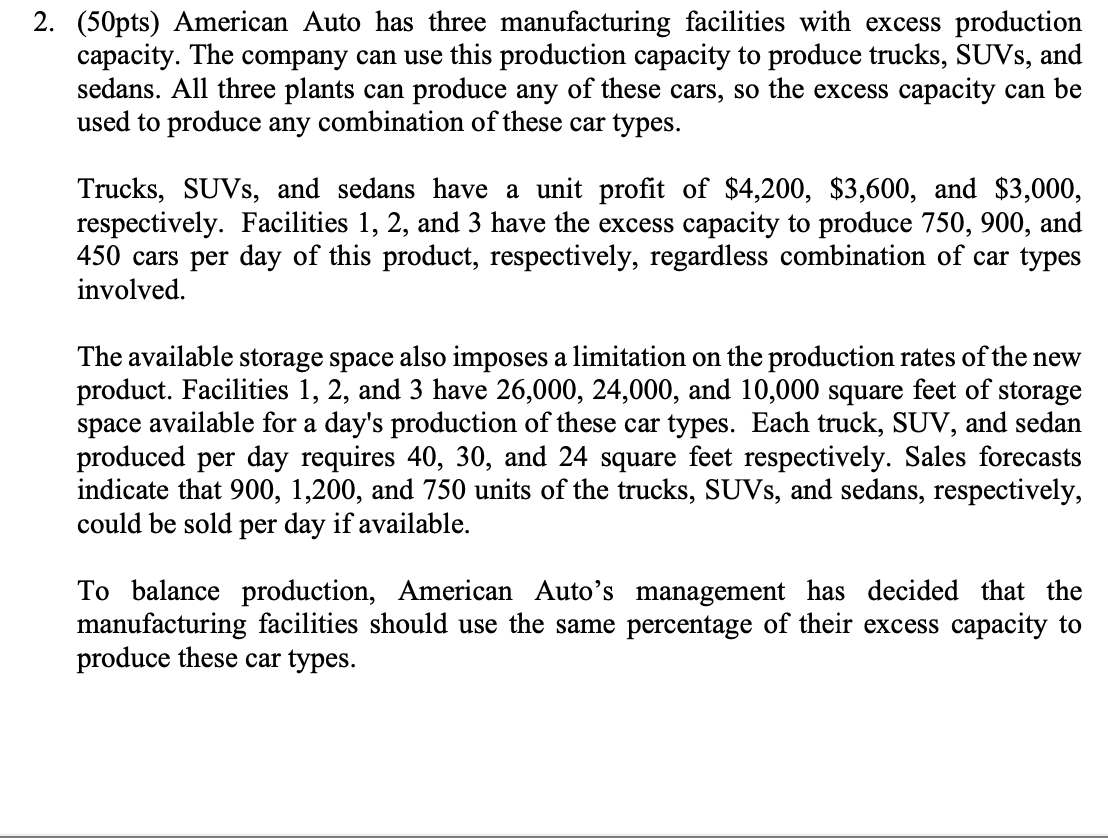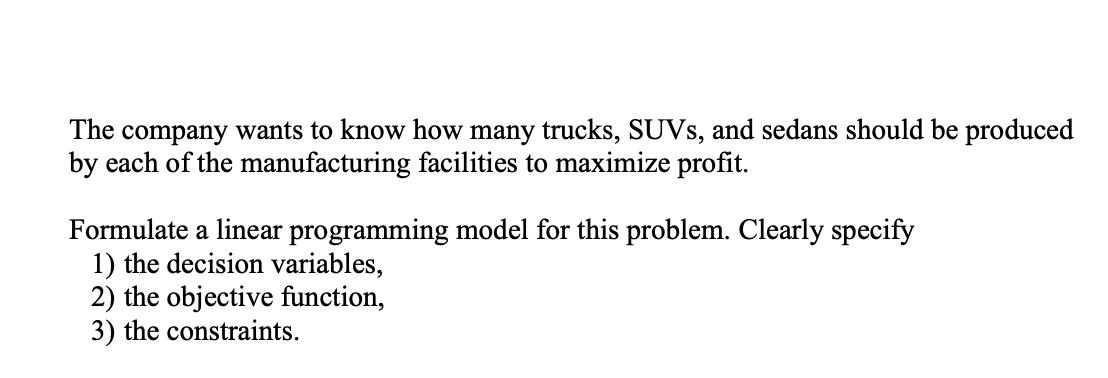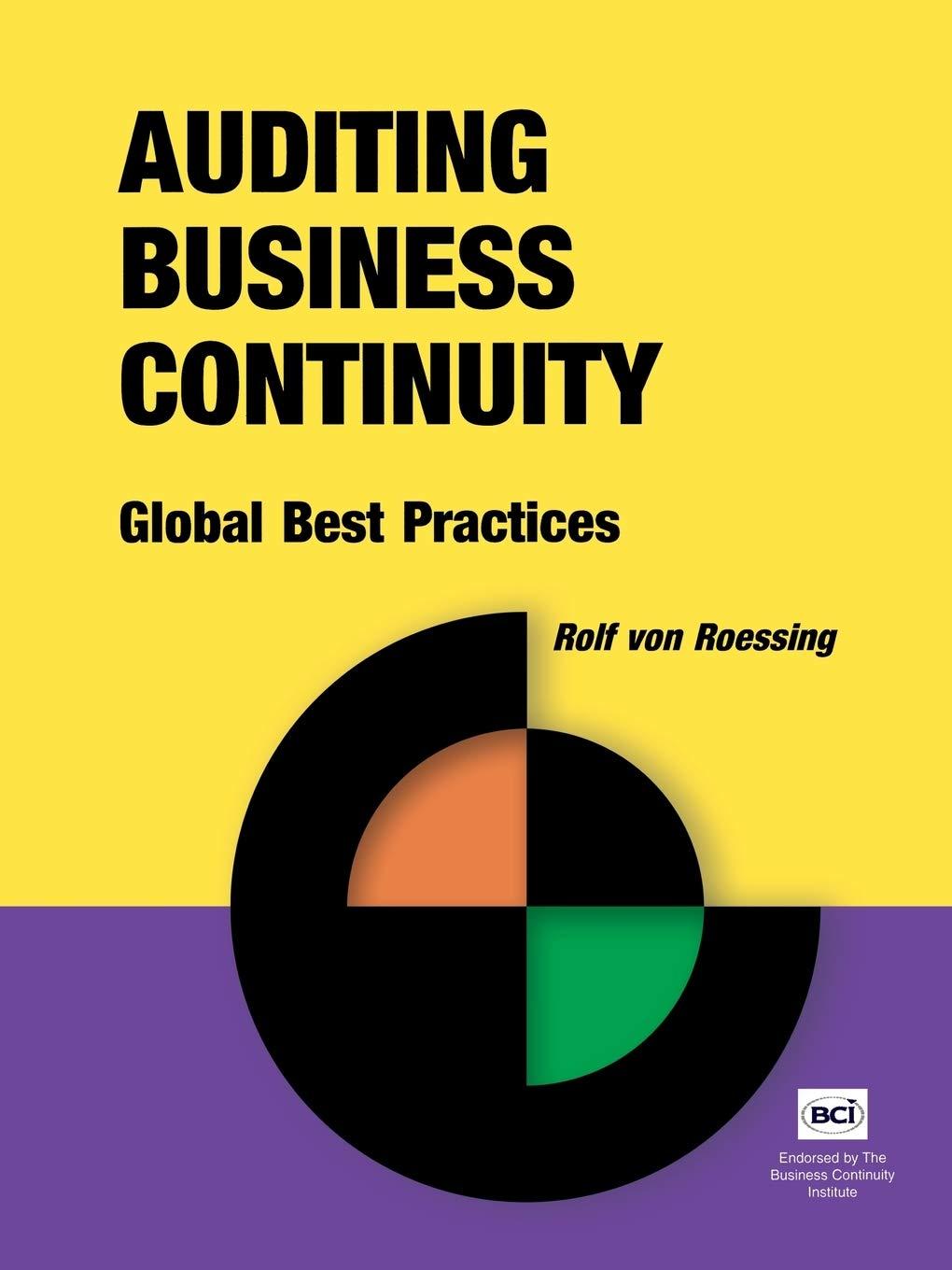

(50pts) American Auto has three manufacturing facilities with excess production capacity. The company can use this production capacity to produce trucks, SUVs, and sedans. All three plants can produce any of these cars, so the excess capacity can be used to produce any combination of these car types. Trucks, SUVs, and sedans have a unit profit of $4,200,$3,600, and $3,000, respectively. Facilities 1,2 , and 3 have the excess capacity to produce 750,900 , and 450 cars per day of this product, respectively, regardless combination of car types involved. The available storage space also imposes a limitation on the production rates of the new product. Facilities 1,2, and 3 have 26,000, 24,000, and 10,000 square feet of storage space available for a day's production of these car types. Each truck, SUV, and sedan produced per day requires 40,30 , and 24 square feet respectively. Sales forecasts indicate that 900,1,200, and 750 units of the trucks, SUVs, and sedans, respectively, could be sold per day if available. To balance production, American Auto's management has decided that the manufacturing facilities should use the same percentage of their excess capacity to produce these car types. The company wants to know how many trucks, SUVs, and sedans should be produced by each of the manufacturing facilities to maximize profit. Formulate a linear programming model for this problem. Clearly specify 1) the decision variables, 2) the objective function, 3) the constraints. (50pts) American Auto has three manufacturing facilities with excess production capacity. The company can use this production capacity to produce trucks, SUVs, and sedans. All three plants can produce any of these cars, so the excess capacity can be used to produce any combination of these car types. Trucks, SUVs, and sedans have a unit profit of $4,200,$3,600, and $3,000, respectively. Facilities 1,2 , and 3 have the excess capacity to produce 750,900 , and 450 cars per day of this product, respectively, regardless combination of car types involved. The available storage space also imposes a limitation on the production rates of the new product. Facilities 1,2, and 3 have 26,000, 24,000, and 10,000 square feet of storage space available for a day's production of these car types. Each truck, SUV, and sedan produced per day requires 40,30 , and 24 square feet respectively. Sales forecasts indicate that 900,1,200, and 750 units of the trucks, SUVs, and sedans, respectively, could be sold per day if available. To balance production, American Auto's management has decided that the manufacturing facilities should use the same percentage of their excess capacity to produce these car types. The company wants to know how many trucks, SUVs, and sedans should be produced by each of the manufacturing facilities to maximize profit. Formulate a linear programming model for this problem. Clearly specify 1) the decision variables, 2) the objective function, 3) the constraints








